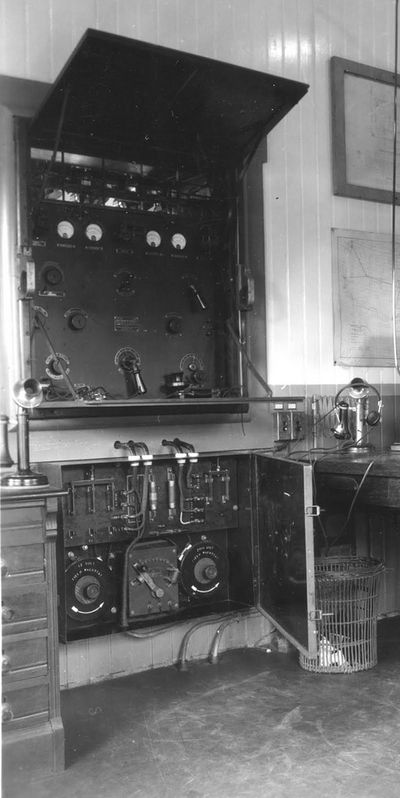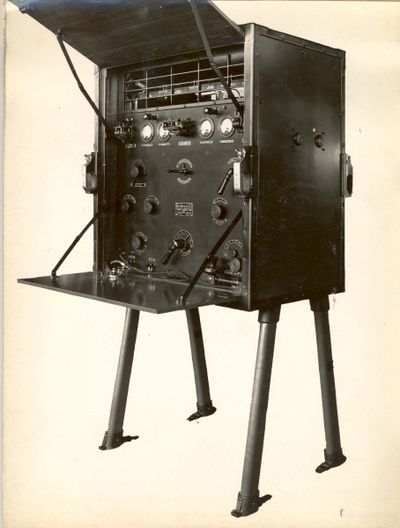Difference between revisions of "BC-127"
| Line 1: | Line 1: | ||
| − | == | + | ==BC-127 transmitter== |
The Transmitter, BC-127, has a normal output to the antenna of 300 to | The Transmitter, BC-127, has a normal output to the antenna of 300 to | ||
40P watts. It is designed to operate at the specified frequency (353-157.9 kilocycles) | 40P watts. It is designed to operate at the specified frequency (353-157.9 kilocycles) | ||
Revision as of 18:23, 13 December 2013
BC-127 transmitter
The Transmitter, BC-127, has a normal output to the antenna of 300 to 40P watts. It is designed to operate at the specified frequency (353-157.9 kilocycles) with antennae whose equivalent capacities lie between 1000 and 4000 micro-microfarads. The radio frequency circuits are of the master oscillatorpower amplifier type, having a main and an intermediate power amplifier. The plate circuit of the main power amplifier is coupled to the antenna by means of an antenna transformer. The master oscillator and the intermediate power amplifier are YT-4 (5o.-watt) vacuum tubes; the main power amplifier is VT-22 (250-watt) tube. The modulation circuits consist of two speech amplifiers (VT-4's) connected in parallel and transformer-coupled to two speech modulator tubes (VT-22's) in parallel. The modulator tubes draw their plate supply in parallel with the plates of the main power amplifier tube through an iron core reactor. The transmitter provides three separate methods of communication, to-wit: (a) radio telephony, (b) undamped wave telegraphy, and (c) tone (modulated) telegraphy. In tone telegraphy a small motor alternator supplies audio energy to the input circuit of the speech amplifiers, producing a note of frequency between 500 and SOOcycles. A five-step rheostat, connected into the field circuit of the motor alternator, provides five different tones between the two limiting frequencies. A particular feature of this transmitter consists of provisio}lS for remote controL The lines from a remote telegraph key or from a remote micrvphone can be attached to binding posts provided on the transmitter for this purpose. , In operation of the transmitter by remate control an attendant is required at the transmitter ta put it into operation and to supervise its adjustment.

